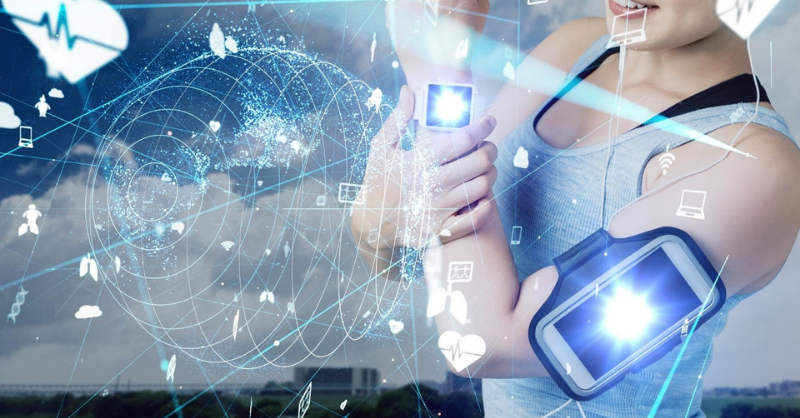Understanding the Growth of Wearable Health Care Technology
May 17, 2021

It’s been almost 14 years since Fitbit was founded and more than a decade since its first tracker launched. As of October 2020, the company has sold more than 105 million devices worldwide and boasts close to 30 million active users.
The popular fitness tracker was one of the first wearable technology products to hit the market, and the business has continued to grow. The global wearable technology industry is predicted to expand to $54 billion by 2023 and $61.4 billion by 2025, and the global wearable health care devices market is expected to reach $27.5 billion by 2026.
It’s estimated that 158 million units of wearables will be shipped worldwide in 2022. That’s probably because more than 80% of consumers report a willingness to wear fitness technology. Applications of wearable technology also have increased with the explosion of smartphone use and integration with Big Data, artificial intelligence (AI), and augmented reality (AR).
The COVID-19 outbreak has increased the use of technology for health tracking. One survey found that 35% of consumers use their smartphone or a wearable device to track their health more often than they did pre-pandemic.
Even providers are on the patient health care technology bandwagon. A Stanford Medicine survey of more than 700 physicians, residents and medical students around the United States found that 83% of physicians and 79% of students and residents see value in self-reported data from patients using wearables, and 80% say that data holds value in clinical care management. Approximately two-thirds of physicians disclose that they would prescribe an app to help patients manage chronic diseases.
An array of advantages
Wearable technology comes in various forms and can be worn as accessories and on different parts of the body. Devices utilized for health care include smart watches, wearable ECG and blood pressure monitors, biosensors, smart clothing, biopsy wearables and smart rings.
Wearable technology for health care offers several advantages, including:
- Enabling patients to be more active in their own care
- Providing data and automatic analytics that can help nurse practitioners diagnose issues more quickly and intervene sooner to prevent readmissions or negative sequelae
- Increasing physical activity
- Monitoring vulnerable patients remotely
- Making health care more accessible to patients in remote areas or while homebound
- Gathering information automatically to help overcome limited memories and capacity for accuracy
- Increasing personalization of health care
- Improving medication adherence
- Reducing health care costs
Emerging applications
A literature review conducted by the Healthcare Information and Management Systems Society (HIMSS) on wearable technology in health care documented several newer applications. These include improving patient management efficiency in hospitals, assisting with the screening, diagnosis and monitoring of psychiatric disorders and enhancing clinical decision-making for disease management.
According to the article, garments integrated with wearable solutions have facilitated the continuous monitoring of risks that endanger patient lives. In sports medicine, wearable devices are employed to monitor functional movements and workloads to maximize performance and minimize injury.
Newest products
Some of the most recently introduced wearable technologies in health care are for vision and hearing optimization. For example, a noninvasive smart contact lens was developed by Switzerland-based Sensimed. Called Triggerfish, it consists of a sensor embedded in a soft silicone contact lens used to detect the risk of glaucoma through tiny fluctuations in an eye’s volume.
Another type of contact lens, this one manufactured by InWith, puts stretchable electronic circuitry in Bausch & Lomb contact lenses. The electronics embedded in the lenses are designed to support AR and XR (mixed reality) applications to help people with myopia and presbyopia.
For auditory purposes, Livio AI is a wearable hearing aid that purports to track the physical and mental states of the wearer. It also leverages AI and machine learning to translate foreign languages and is touted as the “world’s first hearing aid with Fall Alert.”
Expanding on the popularity of smart watches are smart rings, which are wearable electronics devices loaded with mobile components like sensors and NFC chips used for a variety of applications, including tracking daily activities, sleep monitoring and health and wellness management. These rings come in a range of materials and prices.
Learn more about the MLS Group of Companies and our nationwide network of qualified physicians.
Sign up for Updates:
Privacy Details
By submitting this form, you are consenting to receive marketing emails from: MLS Group of Companies, LLC. You can revoke your consent to receive emails at any time by using the Unsubscribe link, found at the bottom of every email.

